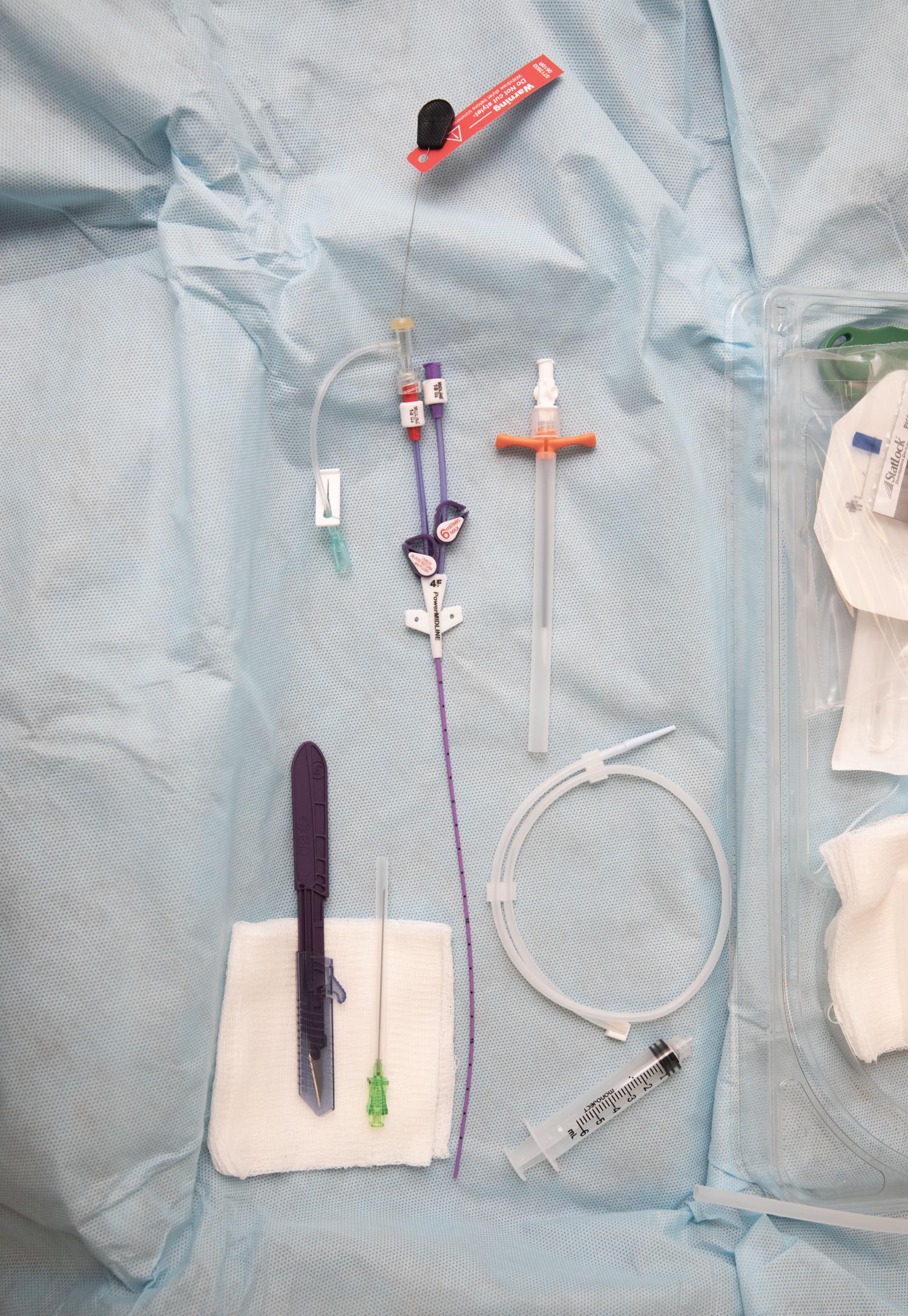The results of a randomized clinical trial suggest that patients with serious bloodstream infections caused by Staphylococcus aureus may have an easier treatment option.
The study, published today in JAMA, found that the long-acting lipoglycopeptide antibiotic dalbavancin was noninferior to standard therapy in terms of clinical efficacy in patients with complicated S aureus bacteremia who had achieved blood culture clearance. Dalbavancin was not found to be superior to standard therapy, however, when assessed by a measure that incorporates multiple components of overall outcomes, including a patient's treatment-related experience.
The lead investigators of the phase 2b trial, which was sponsored and funded by the National Institute of Allergy and Infectious Diseases, part of the National Institutes of Health (NIH), say even though dalbavancin was not found to be superior to standard therapy, the clinical efficacy results indicate it's as good as current treatment options for complicated S aureus bacteremia, an infection that has a 25% mortality rate and is associated with roughly 20,000 US deaths a year.
"Our findings give patients and healthcare providers the data to support an extra choice when deciding on treatment for complicated S. aureus bacteremia," Nicholas Turner, MD, first author and assistant professor of medicine at Duke University School of Medicine, said in an NIH press release.
An easier treatment option
The trial, conducted at 22 hospitals in the United States and 1 in Canada from April 2021 through December 2023, randomly assigned 200 adults with complicated S aureus bacteremia who had achieved blood culture clearance with initial therapy 1:1 to receive two doses of intravenous (IV) dalbavancin on days 1 and 8 after randomization or 4 to 8 weeks of standard IV antibiotic therapy (cefazolin or an anti-staphylococcal penicillin for methicillin-susceptible S aureus or daptomycin or vancomycin for methicillin-resistant S aureus).
The hypothesis was that dalbavancin, which is approved for acute bacterial skin infections but has demonstrated clinical efficacy against S aureus bacteremia in previous studies, might be easier for patients because it doesn't involve prolonged IV treatment through a peripherally inserted central catheter (PICC) line. Patients with PICC lines require specialized nursing care, have limited mobility, and can be at risk of additional complications. Dalbavancin, on the other hand, requires only two 1-hour IV treatments.
"Dalbavancin offers a way to complete therapy without the hassle and hazards of long-term IV access," study corresponding author Thomas Holland, MD, a professor in the Duke University School of Medicine, said in a Duke Health press release. "That's a meaningful shift in how we care for people with serious infections."
The primary outcome was the desirability of outcome ranking (DOOR) at day 70. The DOOR end point consisted of five components: clinical success, infectious complications, safety complications, mortality, and health-related quality of life. For the drug to be considered superior, patients who received dalbavancin had to have a 50% or higher probability of having a higher DOOR score.
Our findings give patients and healthcare providers the data to support an extra choice when deciding on treatment for complicated S. aureus bacteremia.
"In contrast to binary outcomes that focus solely on clinical success or failure, the primary DOOR outcome was selected because it better reflects the full balance of efficacy, safety, and quality-of-life considerations clinicians and participants actually use to determine treatment," the study authors wrote.
Secondary outcomes included clinical efficacy at day 70 and adverse events.
Of the 200 patients enrolled in the trial (mean age, 56; 69% male), 167 survived to day 70 and were included in the final analysis. The probability of a more desirable day 70 DOOR score in a patient randomly selected from the dalbavancin group was 47.7% (95% confidence interval [CI], 39.8% to 55.7%) compared with a patient from the standard therapy group, which meant that dalbavancin was not superior. Notably, patients in the dalbavancin group didn't report a better quality of life.
But 73% patients treated with dalbavancin had overall clinical success, compared with 72% in the standard therapy group, for a difference of 1.0% (95% CI, –11.5% to 13.5%), which met the prespecified noninferiority margin of 20%.
Serious adverse events were similar in both groups, reported in 40 of 100 patients treated with dalbavancin and 34 of 100 who received standard therapy. But adverse events leading to treatment discontinuation were more frequent in the standard therapy group (12 of 100 vs 3 of 100).
Specific quality-of-life outcomes not measured
Although the findings did not support their hypothesis, the authors note that the study did not assess specific measures like the burden associated with prolonged IV treatment, caregiver concerns, or the need for home health visits. Patients treated with dalbavancin also spent 1 less day in the hospital than those treated with standard therapy.
"I think the take-home is that this is a viable option," Holland said in a JAMA podcast. "This is something that we should be thinking about and looking at and prescribing for our patients."
In an editorial that accompanies the study, JAMA Deputy Editor Preeti Malani, MD, of the University School of Michigan, and Erin McCreary, PharmD, of the University of Pittsburgh School of Medicine, also point out that the study did not specifically address the outcomes in which dalbavancin might improve a patient's quality of life, such as the ability to be discharged home versus a skilled nursing facility, a metric they say is "deeply meaningful to patients and health systems, both socially and economically."
Despite the limitations of the DOOR measure, they say the trial provides the best data available to date on the use of dalbavancin for S aureus bacteremia, a complex infection for which there's "no clear global consensus on what constitutes the standard of care."
"The work of Turner et al offers a practical roadmap for where dalbavancin should and should not be positioned clinically, connecting the dots and prompting a broader dialogue about novel approaches for treating S aureus bacteremia," McCreary and Malani wrote.























